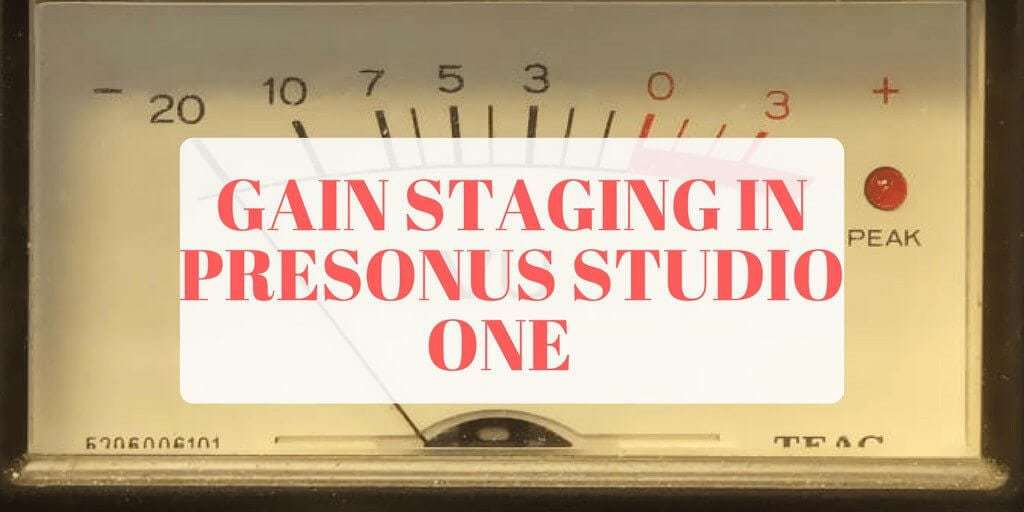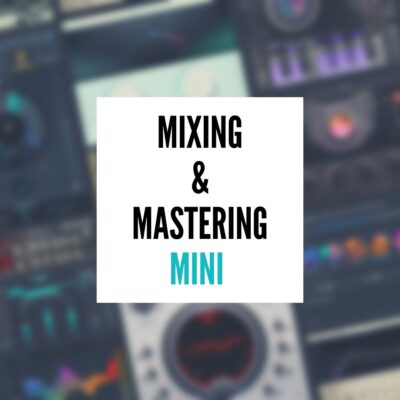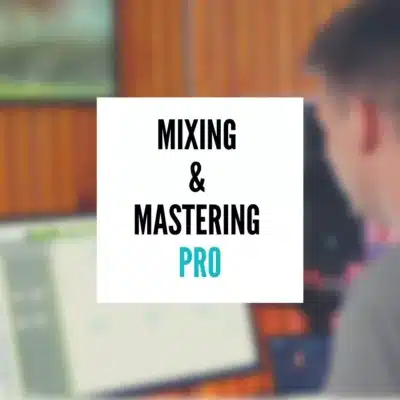Introduction
If you’re mixing in Studio One and your tracks are sounding too harsh, distorted, or just not sitting right—there’s a good chance your gain staging is off. I’m not here to throw a bunch of technical jargon at you about dBFS vs. VU or the science behind analog reference levels. You can find plenty of deep-dive articles on that if you want to geek out.
Instead, I’m going to show you exactly how I handle gain staging in my own sessions—step by step—so your mixes hit right, your plugins sound the way they’re supposed to, and your mastering chain (especially if you’re using analog gear) stays clean and musical.
This isn’t theory. It’s what I actually do when I mix tracks for clients—whether it’s hip-hop, pop, EDM, or anything in between.
The 3 Stages of Gain Staging in Studio One
When I’m gain staging a mix, I break it down into three simple phases: individual tracks, buses, and the master. This helps me keep everything clean and under control—especially when I’m using analog gear or analog-style plugins that expect a certain input level.
Stage 1: Individual Tracks
Start by getting each track under control—kicks, snares, vocals, bass, whatever. These are often recorded or exported way too hot, and if you just start mixing like that, you’re going to overload your plugins and kill your headroom.
I aim to get each track peaking around -12 dBFS to -18 dBFS, or sitting at 0 VU if you’re using a VU meter plugin. You can do this manually using Studio One’s event gain or insert a simple gain plugin at the top of your chain.
I personally use the Hornet VU Meter MK4, which lets me hit “Auto,” and it levels everything for me to sit around 0 VU. It’s not essential, but it speeds things up.
Why this matters: most analog-modeled plugins—like SSL or 1073 channel strips—are built to behave like the original gear. Feed them a hot digital signal and you’ll get unwanted distortion or compression that wasn’t intended.
Stage 2: Bus Groups
Once individual tracks are leveled, route them into buses—for example: Drums, Bass, Music, Vocals, and Effects. Then make sure those buses are also hitting around 0 VU or -8 to -10 dBFS on peak meters.
If your buses are too hot, don’t overthink it—just grab all the faders on your individual tracks and pull them down evenly until your bus is sitting at a healthy level.
Think of this stage as keeping your mix in check before it hits your master. If your buses are slammed, your master won’t have any room to breathe.
Stage 3: Master Output
Finally, I make sure the master bus is peaking at -8 dBFS, which for me is the sweet spot before hitting my analog mastering chain. My converters are calibrated for -18 dBFS = 0 VU, so this keeps everything aligned.
I actually use the Hornet plugin here too, right at the top of the master chain. As I mix and add more processing, the overall level naturally creeps up. With Hornet set to auto, I can bring it back to that -8 target without guessing or constantly riding the fader.
This step is crucial if you’re mixing into analog gear—or even if you just want consistency across different sessions.
Common Mistakes to Avoid
Even if you understand gain staging, it’s easy to slip into bad habits—especially when you’re working fast or juggling multiple sessions. Here are a few things I see all the time that can wreck your mix before you even get started:
Turning Up the Mic Pre Instead of Turning Down the Beat
This one comes up a lot when people are recording vocals at home. If you can’t hear yourself over the beat, don’t crank the mic preamp—that’s just going to clip your vocal on the way in. Instead, turn the instrumental down in your headphones. Clean input > loud input every time.
Trusting the Wrong Meters in Studio One
Studio One’s metering can be a little misleading if you don’t know what you’re looking at. The default meters are post-fader, which means they show you signal after the fader—not what’s actually coming into the plugin chain. That can mess with your gain staging big time.
I’ve mentioned this on the Studio One forums before—I’d love to see them change this behavior or at least give us an easier option to view pre-fader input levels.
Until then, I rely on plugins like Hornet VU or just use good old-fashioned ears and reference meters to make sure things aren’t blowing up my signal chain.
Forgetting That Plugins React to Level
Remember: analog-modeled plugins are designed to respond to specific input levels. If you’re hitting them too hard, they won’t sound like they should. You might think a plugin sucks when really, you’re just hitting it 10 dB too hot. Fix the level first—then make your decisions.
Bonus Tip: Analog vs. Digital Distortion
One thing I always remind people: digital distortion is unforgiving. Once you clip in the digital world, you’re pretty much stuck with harsh, brittle artifacts. There’s no warmth, no character—just crunchy, ugly clipping.
Analog, on the other hand, can be pushed in a musical way—if you do it intentionally. A good piece of analog gear, like my Overstayer or other outboard comps and EQs, can add subtle saturation or harmonics when driven right. But none of that works if your gain staging is off and you’re slamming your converters before you even get there.
That’s why I like to push things after I’ve gain staged properly. Once my levels are hitting my hardware chain cleanly, that’s where I get to have fun—dialing in extra punch, vibe, and warmth. But the key is to keep your levels in check first, so you’re driving gear the way it was designed to be driven.
Conclusion
Hopefully this gave you a better idea of how I approach gain staging in Studio One. It’s not about being super technical or overthinking every meter reading—it’s about creating a clean, consistent signal path so your plugins and hardware sound their best.
If your sessions feel messy, your mixes are distorting too early, or your plugins aren’t reacting the way you expect, there’s a good chance gain staging is the problem. Tighten that up, and everything downstream becomes easier—your mixes will sound more balanced, your effects will respond better, and your mastering chain will have the headroom it needs to breathe.
Need help getting your mix to a pro level?
I offer professional online mixing and mastering services that are trusted by artists across pop, hip-hop, EDM, Rock and beyond. Whether you’re stuck on a track or just want a fresh set of ears, I’ll help you get that release-ready sound.
👉 Book your mix or master now at MixandMasterMySong.com
Or, if you’re building your own sessions, check out my Mixing Presets to streamline your workflow and speed up your mixes.
Thanks for reading—and if you found this helpful, don’t forget to subscribe to the YouTube channel and drop a comment with any questions!








Thank you for your gain structuring video. The idea was not new to me on individual tracks but not for busses. This amazing and is going to revolutionize my recordings. Have a great life. Success only!